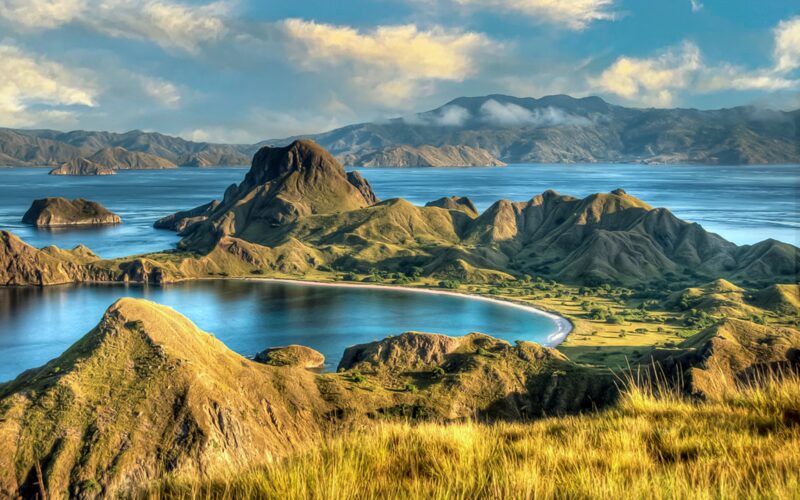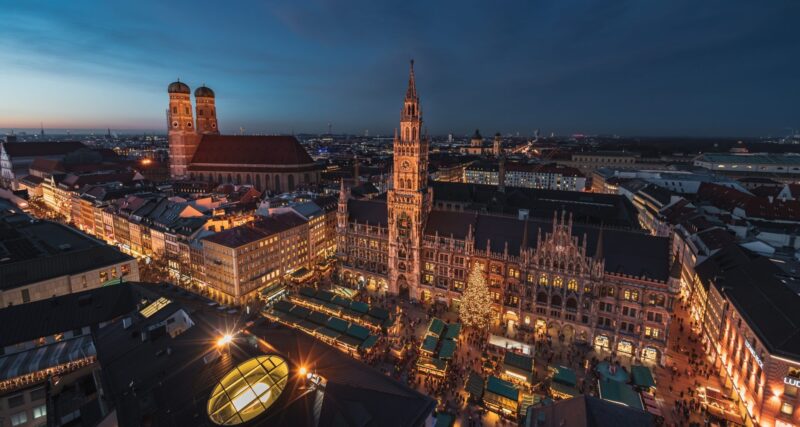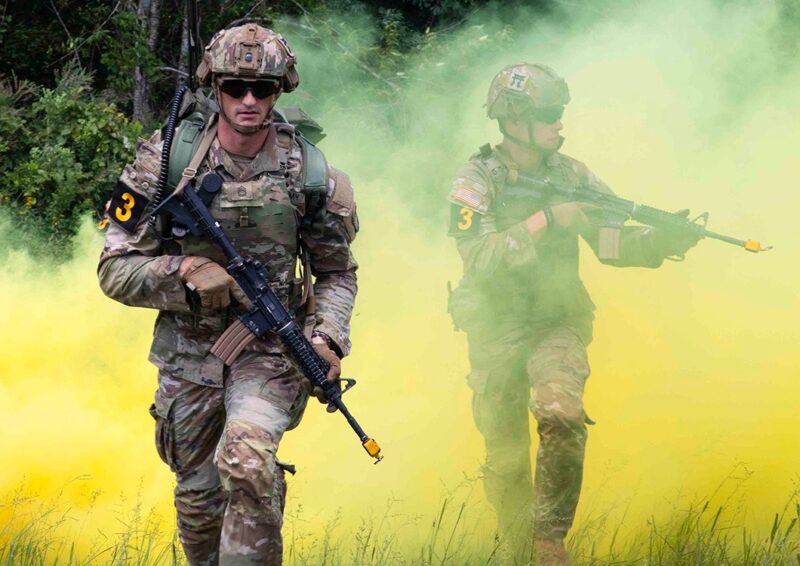If you’re dreaming of sailing across turquoise waters surrounded by volcanoes, coral reefs, and islands inhabited by real-life dragons, the Flores Sea is where that dream comes alive. The most practical and memorable way to reach Komodo National Park is by starting in Labuan Bajo, on the western edge of Flores, and taking a multi-day boat journey through the islands.
The short answer: visit between May and October, when the seas are calm, and plan at least three to five days to experience the best of Komodo — from pink beaches and manta rays to the dragons themselves. Whether you travel on a modest liveaboard or a private vessel, the crossing itself is half the adventure.
Getting There: Your Gateway Is Labuan Bajo
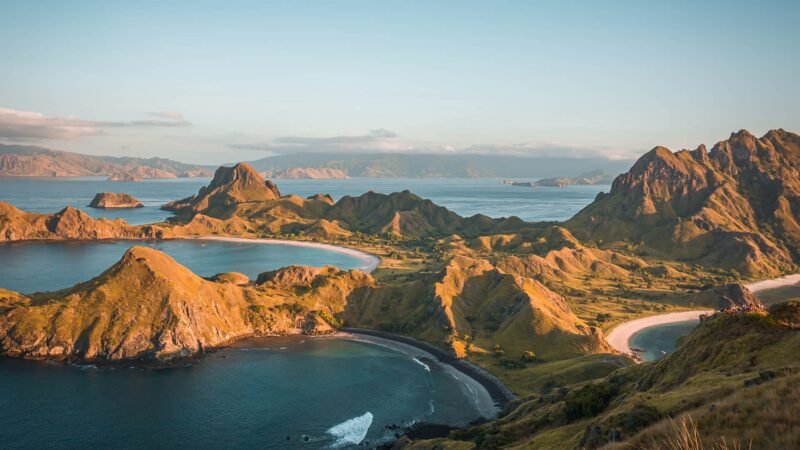
Most travelers arrive in Labuan Bajo, a small but fast-growing port town that has become the hub for exploring Komodo. You can fly here directly from Bali, Jakarta, or Surabaya in under two hours. Once you land, the harbor is just a short ride away — and that’s where your Flores Sea journey begins.
Labuan Bajo may look quiet at first glance, but it’s buzzing with dive operators, fishermen, and travelers preparing for their island-hopping adventures. You can stock up on essentials here — sunscreen, dry bags, snacks — before boarding your vessel.
How to Travel: Boat, Liveaboard, or Yacht?
There are three main ways to explore the Flores Sea and Komodo National Park, and the right one depends on how you like to travel:
- Local wooden boats — basic but authentic, often used for day trips.
- Shared liveaboards — a mid-range option with cabins, meals, and diving equipment.
- Private yacht charters — fully crewed vessels offering privacy, space, and flexible itineraries.
If you want to explore remote corners of the park, dive in crystal-clear lagoons, and sleep under the stars, a yacht offers unmatched freedom. For travelers seeking comfort and independence, options like a luxury yacht charter Komodo provide multi-day itineraries starting from Labuan Bajo, combining sailing, snorkeling, and guided treks — but in a way that keeps the experience intimate and authentic.
The goal isn’t luxury for its own sake; it’s about having time and range to truly discover the Flores Sea.
When to Go: Timing Is Everything
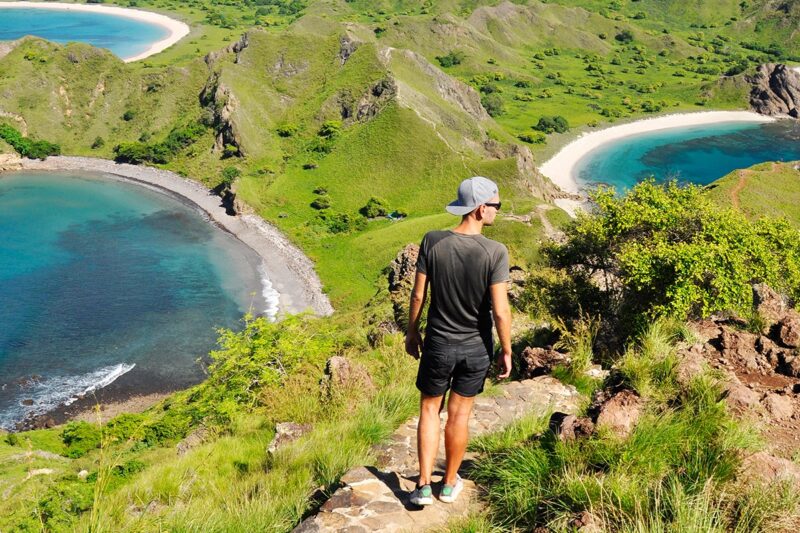
The dry season (May to October) is the best time to sail. The water is calm, visibility is excellent for diving, and wildlife is active. This is also when you’ll catch the most famous sight — the Komodo dragons sunbathing near ranger stations on Rinca or Komodo Island.
During the wet season (November to April), conditions are less predictable. Seas can be rough, and some islands may be temporarily inaccessible. That said, if you don’t mind short bursts of tropical rain, you’ll have fewer crowds and lusher scenery.
A Sample Itinerary: From Labuan Bajo to Komodo and Back
A typical 3-day Komodo route starts from Labuan Bajo and loops through the park’s most famous spots:
- Day 1: Sail from Labuan Bajo, stop at Kelor Island for snorkeling and hiking, then anchor near Pink Beach for swimming or diving.
- Day 2: Trek up Padar Island at sunrise for the park’s signature panorama, then continue to Komodo Island to see the dragons. In the afternoon, relax at a coral reef or a sandbar near Taka Makassar.
- Day 3: Swim with manta rays at Manta Point, visit a floating village, and cruise back to Labuan Bajo by noon.
If you have five to six days, you can sail deeper into the southern parts of the park — to Horseshoe Bay, Cannibal Rock, or the reefs of Nusa Kode — where marine life flourishes and you may not see another boat for hours.
What to Expect in the Middle of the Journey
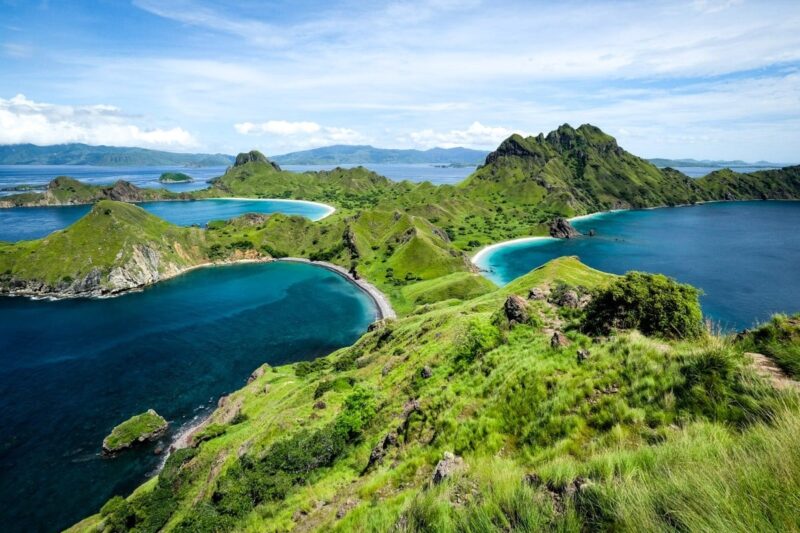
Halfway through your crossing, you start to realize that this isn’t just a trip between islands — it’s an immersion in one of Indonesia’s most diverse marine ecosystems.
Here’s what you’ll encounter:
- Komodo dragons on the islands of Rinca and Komodo, guided by park rangers.
- Padar Island, with its iconic tri-colored beaches and sweeping views.
- Pink Beach, where coral fragments tint the sand a delicate rose.
- Taka Makassar, a tiny sandbar surrounded by turquoise shallows, is perfect for snorkeling.
- Manta Point, where giant rays glide gracefully below you.
- Kalong Island, where thousands of flying foxes soar at sunset.
Midway through your trip, you’ll often anchor in quiet coves, dine under the stars, and fall asleep to the sound of the sea. It’s peaceful, humbling, and deeply grounding — a reminder that travel can still feel like discovery.
Permits, Park Rules, and Practical Tips
To enter Komodo National Park, you’ll need a park entry ticket and a guide (included in most organized tours or charters). Rangers accompany all dragon treks for safety reasons.
A few essentials to know before you go:
- Bring reef-safe sunscreen — regular sunscreen harms corals.
- Pack snorkeling gear, though most charters provide it.
- Carry cash in Indonesian Rupiah for local fees or souvenirs.
- Expect limited internet once you’re out at sea.
- Respect the wildlife — keep a distance from dragons and avoid feeding fish.
Most boat operators handle logistics, from meals to park permits, but it’s good to double-check before departure.
Life at Sea: What the Experience Feels Like
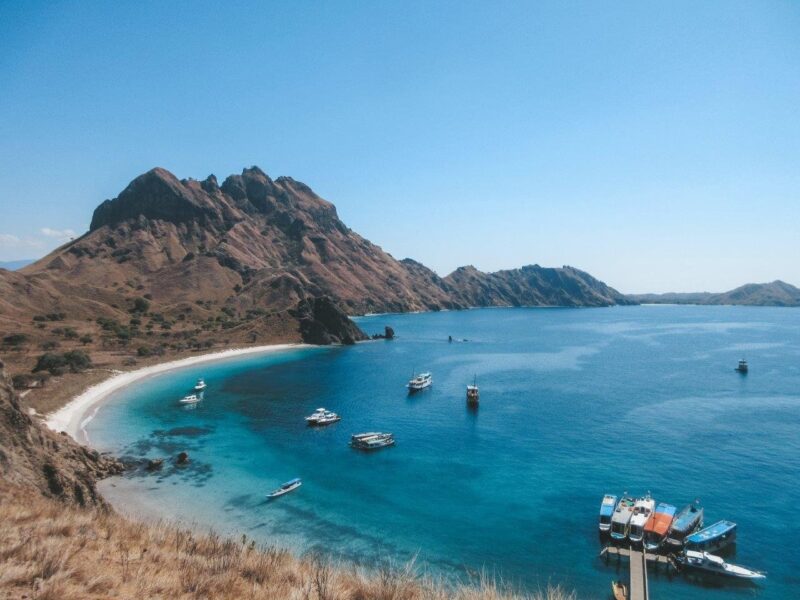
Days on the Flores Sea follow a rhythm — sail, swim, eat, rest, repeat. Mornings begin with soft sunlight and the smell of coffee on deck. Afternoons bring coral gardens, manta rays, or short island hikes. Evenings fade into sunsets that turn the water gold, and dinner is often fresh-caught fish grilled right on board.
What makes the crossing special is the sense of movement — you’re constantly between worlds: land and sea, wild and calm, known and unknown. Every island feels slightly different, shaped by wind, current, and time.
Why the Journey Matters
Most visitors come for the Komodo dragons, but the real reward lies in the journey itself. Sailing across the Flores Sea is not just transportation — it’s immersion in Indonesia’s island heart.
By the time you return to Labuan Bajo, you’ve seen volcanic peaks, coral reefs, rare wildlife, and an open sea that stretches to the horizon. The dragons may be the headline, but it’s the rhythm of the voyage — sunrise hikes, saltwater swims, quiet nights at anchor — that stays with you.
If you plan your route well and travel responsibly, this trip becomes more than a tour; it’s a rare connection with one of the most extraordinary marine landscapes on Earth.

